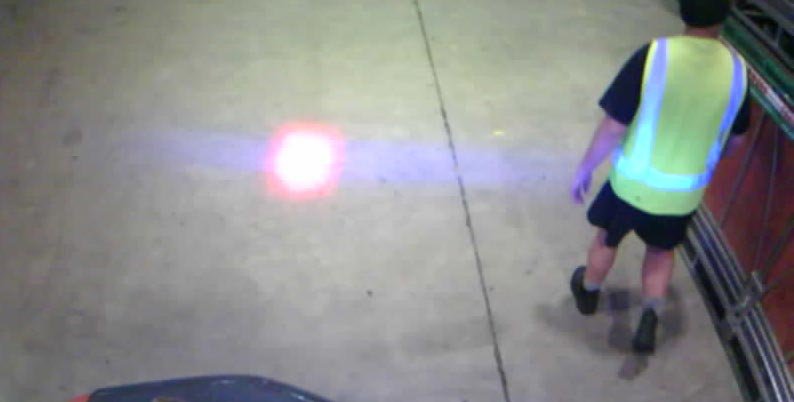High-Visibility PPE is the bare minimum—but what if it could do much more?
Accidents involving forklifts and material handling equipment (MHE) happen fast—and the consequences can be life-changing. High-visibility clothing helps people stand out, but visibility alone doesn’t prevent collisions. In busy, high-risk environments, passive safety measures like blue lights, alarms, and marked walkways often fall short.
Walk into just about any worksite, warehouse, or industrial environment where people are working near mobile equipment, and you’ll likely see workers wearing high-visibility PPE. There’s a good reason for that: it makes people more visible. And the more visible they are, the less likely they are to be struck by a vehicle.
But as SafeWork NSW, Australia notes:
“PPE can be useful, but it is also one of the least effective ways of controlling safety problems. It works best when used with other control measures.”
While high-vis PPE is a great starting point, it does little to prevent accidents when a driver isn’t looking in the right direction at the right time—or when they’re looking, but simply don’t register what they’re seeing due to unconscious factors such as ‘inattentional blindness’.
Other common safety measures in these environments—like backup alarms, blue lights, safety signage, and painted walkways—suffer from the same fundamental limitation: they rely on people noticing them and acting accordingly. But over time, even the most well-intentioned signals fade into background noise. In a warehouse with a dozen forklifts reversing all day, backup beepers quickly become part of the ambient soundscape. Blue lights might stand out at first, but soon blend in too.
While these measures may create the impression of a proactive safety culture, in reality, they often have limited real impact—and may even lead to a false sense of security.
Maximise what you already have.
The humble high-visibility vest is perhaps the most common piece of safety equipment in the world. It’s affordable, effective in both daylight and low-light conditions, and simple to implement—making it a no-brainer for any organization with even a baseline commitment to workplace safety.
But smart safety teams also understand its limitations. So what if there was a way to elevate this low-cost, passive safety control? What if you could transform your high-visPPE into part of a high-tech, active detection system—one that alerts drivers to pedestrians in real time, drawing attention to risks they might otherwise miss?
Thanks to the innovation of its founders, this is exactly the approach SEEN has taken. Recognising that the most effective safety solutions are those that integrate seamlessly into existing operations, SEEN developed a system that turns something most worksites already have—high-visibility retroreflective PPE—into part of a cutting-edge pedestrian detection solution.
With SEEN, your hi-vis PPE becomes more than just a visual aid. It becomes an integral part of a highly accurate, real-time safety system.
Simply install the SEEN sensor (and optional IRIS-i camera if you want to capture visual evidence), and your mobile equipment is now equipped with intelligent pedestrian detection with no need for additional tags, wearables, or complex installations—helping prevent collisions, reduce near misses, and foster greater safety awareness across your team.
Find out how SEEN can enhance your team’s safety by making your PPE smarter and more effective.

